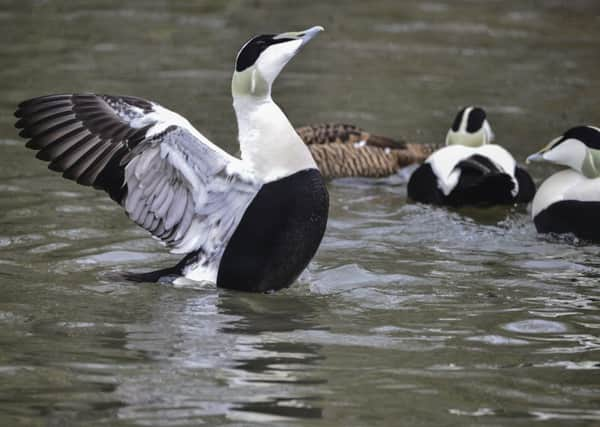Why cleaner seas can be bad news for birds


Results from the latest Wetland Bird Survey, published by the British Trust for Ornithology (BTO), show numbers of eider, mallard and pochard have crashed to their lowest known levels.
Other water birds – including curlew, goldeneye and red-breasted merganser – are also at their scarcest for three decades.
Advertisement
Hide AdAdvertisement
Hide AdExperts believe a number of factors are to blame, including climate change, increases in predation, threats from invasive species and land use changes.
However, it’s thought improvements in sewage treatment could also play a big part in the declines of some species.
Research shows sewage outflows can create nutrient-rich sediments that attract creatures such as worms and shellfish, which in turn offer good feeding for birds.
Europe-wide declines in species such as eider ducks, pochard and goldeneye have coincided with the introduction of directives aimed at cleaning up the seas. In Scotland pochard numbers have dropped by 79 per cent, mallards by 49 per cent and eiders by 31 per cent.
Dr Ben Darvill, development and engagement manager for BTO Scotland, says the figures are worrying and greater understanding of the reasons is needed.
He said: “It’s probably a combination of things. In some cases it will be because there are fewer birds and not so many surviving to breed, and in other situations it may be because birds have moved on elsewhere because there is more food.
“If the birds are fine but just choosing to hang around elsewhere because there’s more food then that’s okay.
“But there’s quite a bit of concern for eider ducks. These are resident breeders here and over winter in the Forth and Clyde.
Advertisement
Hide AdAdvertisement
Hide Ad“Studies in the Clyde show populations have been progressively going down since the 1990s. We’re not sure of the exact cause but there seems to be links with improved water quality and long-term declines.”
He stressed that there is no question that anyone is asking for a return to poorer water quality.
The key is to ensure other threats are reduced as much as possible to give the birds the best chance of survival.
“It’s important from a conservation point of view to make sure other threats to eiders are addressed – we need to tackle non-native predators like mink, which can badly affect colonies, and things like disturbance from human activities. ”
Ornithologist, author and researcher Chris Waltho has been studying eider ducks around the Clyde for more than 40 years.
He has seen the local population plummet from an all-time high of 20,000 in 1997 to under 7,000 in a decade. Today, there are between 5,000 and 6,000.
“We know what’s happening at a population scale but we really don’t understand the full causes yet,” he said.
“There are probably a whole variety of factors at play, one of which is water quality. Eiders feed predominantly on mussels, and these have been disappearing.
Advertisement
Hide AdAdvertisement
Hide Ad“Mussels like enriched waters, not necessarily the cleanest but also not the dirtiest as that comes with many other problems.”
The curlew is also struggling north of the border, with the population halving in just 15 years.
Sarah Sander, RSPB’s Curlew Recovery Programme manager, said: “Curlew are found throughout the year in Scotland, frequenting coastal areas in winter and breeding on upland grassland and moorland in spring.
“They are, however, in serious trouble as the breeding population has dropped by 59 per cent since the mid-1990s.
“The main driver of this decline is due to changes in land use, primarily farming practices, conversion to forestry and predation.
“We’re working with farmers on initiatives like the Clyde Valley Wader Initiative.
“We urgently need to act now as it would be unthinkable to lose the bubbling call of the curlew from Scotland.”
But it’s not bad news for all wetland birds. Some species are doing very well here.
Advertisement
Hide AdAdvertisement
Hide AdNumbers of black-tailed godwit have increased more than fourfold, likely as a result of warmer temperatures, while gadwalls have more than doubled.
Geese are also on the up, partly due to hunting restrictions and an increase in food due to modern farming practices.